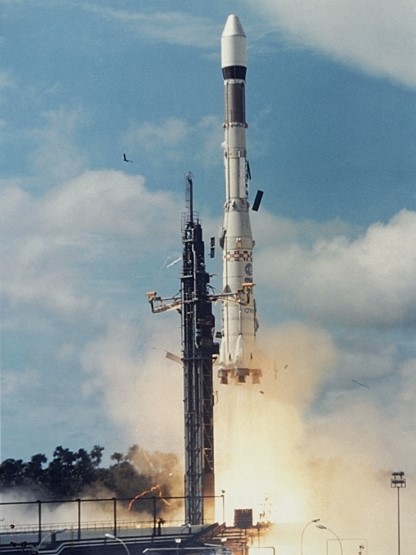15 APRIL 1975
The European Space Conference of April 1975 approved the terms of the final draft of the ESA Convention, merging ELDO (European Launcher Development Organisation) and ESRO (European Space Research Organisation). The Convention was signed by member states Belgium, Denmark, France, Germany (Federal Republic), Italy, the Netherlands, Spain, Sweden, Switzerland and the United Kingdom at the Conference of Plenipotentiaries, in Paris, on 30 May 1975, today celebrated as the birthday of ESA.
14 SEPTEMBER 1976
FIRST ESA GROUND STATION
One of the outcomes of the ESRO council held on 23-24 November 1972 was that the ground station for geostationary satellite control would be located in Michelstadt, in the Odenwald near ESOC. Building construction started in 1974 so that it would be ready for equipment installation at the beginning of 1975.
9 AUGUST 1975
COS-B LAUNCH
COS-B was launched by a Thor-Delta from the Western Test Range, USA, and the first mission for the newly created ESA. It studied gamma-ray sources, and was also the first to be dedicated to a single experiment
24 DECEMBER 1979
FIRST LAUNCH OF ARIANE 1
The first-ever launch of a rocket from ESA’s Ariane programme successfully delivered Technological Capsule 1 (CAT-1) into its planned eight-orbit mission to return data on launch characteristics of the new rocket. As the size of satellites grew, Ariane 1 gave way to the more powerful version 2, 3, and 4. Today’s Ariane 5 is a highly reliable heavy-lift rocket able to place single or multiple payloads in any orbit. ESA extends this by offering more versatility and flexibility with its future Ariane 6.
Image credit: CNES/ESA
